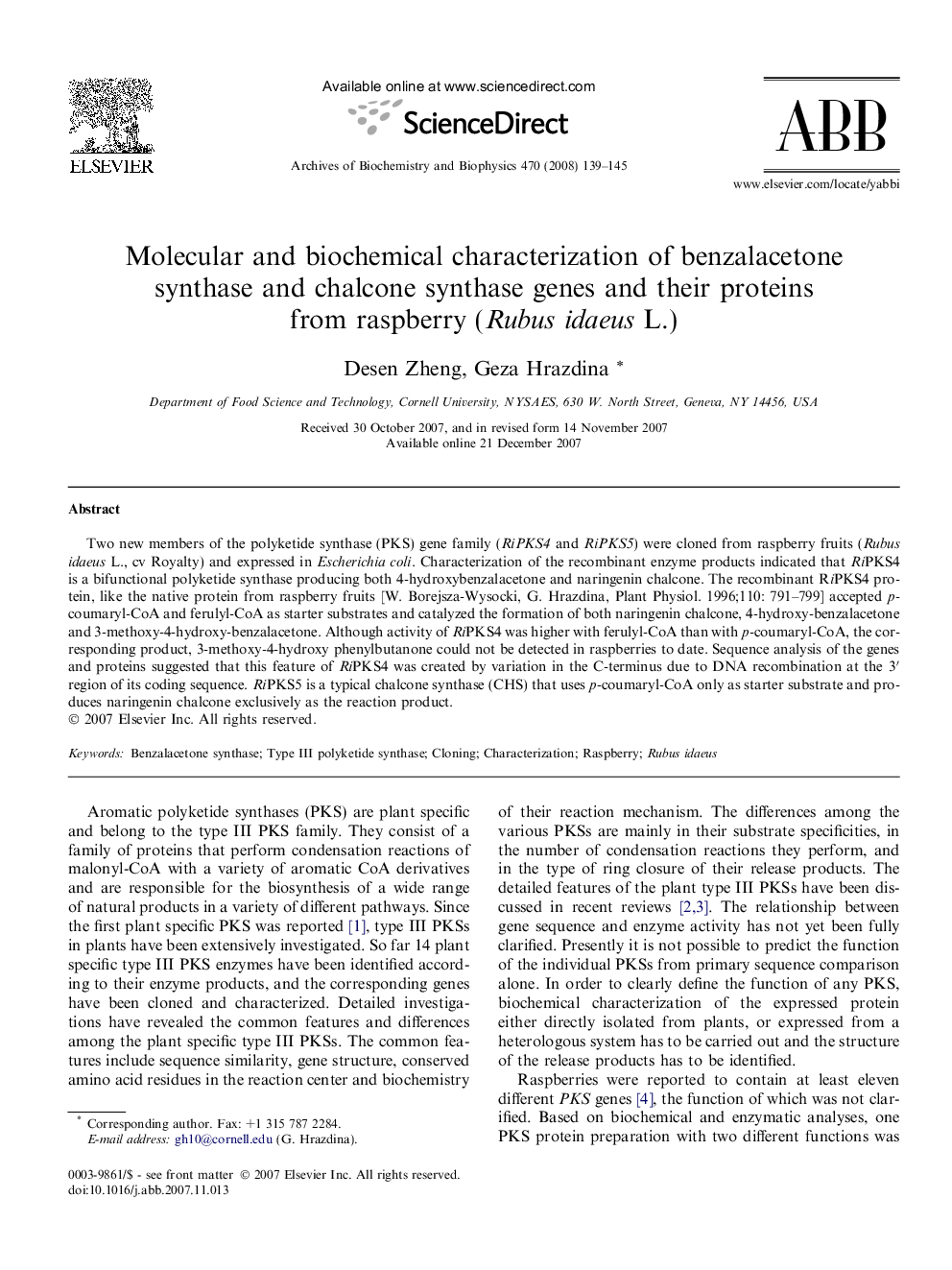| Article ID | Journal | Published Year | Pages | File Type |
|---|---|---|---|---|
| 1926770 | Archives of Biochemistry and Biophysics | 2008 | 7 Pages |
Two new members of the polyketide synthase (PKS) gene family (RiPKS4 and RiPKS5) were cloned from raspberry fruits (Rubus idaeus L., cv Royalty) and expressed in Escherichia coli. Characterization of the recombinant enzyme products indicated that RiPKS4 is a bifunctional polyketide synthase producing both 4-hydroxybenzalacetone and naringenin chalcone. The recombinant RiPKS4 protein, like the native protein from raspberry fruits [W. Borejsza-Wysocki, G. Hrazdina, Plant Physiol. 1996;110: 791–799] accepted p-coumaryl-CoA and ferulyl-CoA as starter substrates and catalyzed the formation of both naringenin chalcone, 4-hydroxy-benzalacetone and 3-methoxy-4-hydroxy-benzalacetone. Although activity of RiPKS4 was higher with ferulyl-CoA than with p-coumaryl-CoA, the corresponding product, 3-methoxy-4-hydroxy phenylbutanone could not be detected in raspberries to date. Sequence analysis of the genes and proteins suggested that this feature of RiPKS4 was created by variation in the C-terminus due to DNA recombination at the 3′ region of its coding sequence. RiPKS5 is a typical chalcone synthase (CHS) that uses p-coumaryl-CoA only as starter substrate and produces naringenin chalcone exclusively as the reaction product.
